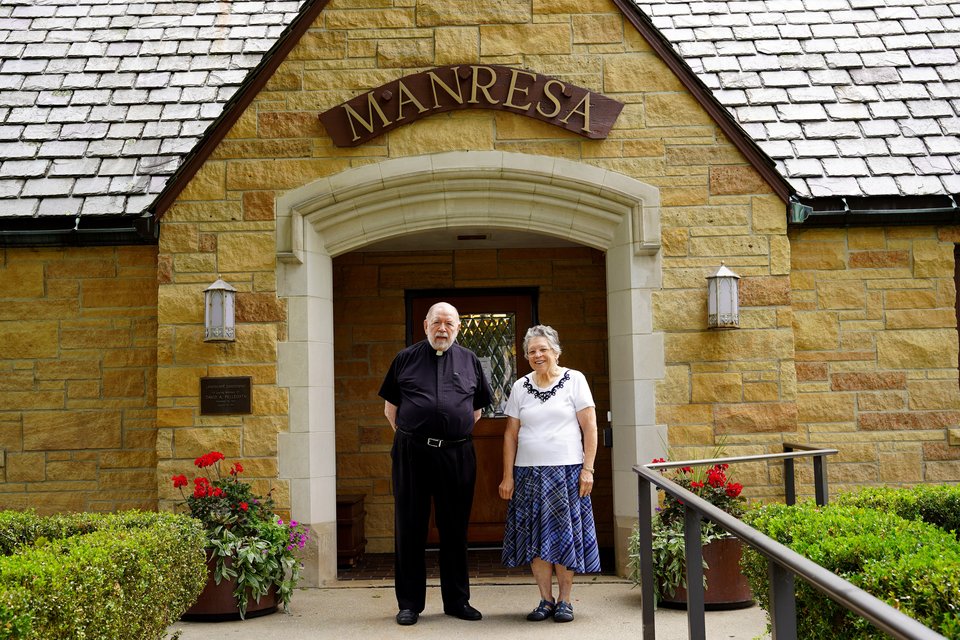Just weeks after a relic of St. Jude stopped in Detroit, Catholics have another chance to venerate a saint known for his healing faith
ROSEVILLE — Another saint known for his miraculous intercession will make a three-day stop in the Archdiocese of Detroit later this month.
Just weeks after a major relic visit of St. Jude Thaddeus, the Archdiocese of Detroit announced the relics of St. Padre Pio, a 20th century Italian Capuchin friar known for his healing prayers, will visit three southeast Michigan churches Nov. 17-19.
The relics of St. Pio of Pietrelcina, as he is officially known, are currently on a national tour sponsored by the Saint Pio Foundation, a nonprofit that promotes the life and teachings of St. Padre Pio and cares for the poor.
Five first- and second-class relics will be available for veneration at St. Barbara Parish in Dearborn from 3-9 p.m. Friday, Nov. 17; at St. Joseph Parish in Erie from 9:30 a.m. to 5 p.m. Saturday, Nov. 18; and at St. Pio of Pietrelcina Parish in Roseville from noon to 5 p.m. Sunday, Nov. 19. Mass in honor of St. Pio will be celebrated at 6 p.m. at St. Barbara, at 5:30 p.m. at St. Joseph, and at 6 p.m. at St. Pio.
St. Padre Pio, a Capuchin who spent most of his life in the monastery of San Giovanni Rotondo or Pietrelcina in Italy, was known for his healing touch, with thousands of faithful flocking to visit him from all over the world. He was also known for bearing the gift of the stigmata, or the five wounds of Christ, on his hands, feet and side.
The relics currently touring the United States include the crusts of the saint’s wounds, cotton gauze bearing his blood stains, a lock of his hair, his handkerchief soaked with his sweat hours before he died, and a piece of his mantle.
“We are indeed grateful to Archbishop (Allen H.) Vigneron for inviting the Saint Pio Foundation to bring the relics of Padre Pio for the first time in the Archdiocese of Detroit,” said Luciano Lamonarca, founder and CEO of the Saint Pio Foundation. “The most important fact, in our opinion, is that the majority of those attending the tour of the relics of Padre Pio would never be able to travel to San Giovanni Rotondo or Pietrelcina to visit the places where our saint was born, lived, and died. It has, therefore, become a mission for us to enable these faithful devotees to have a 'spiritual encounter' with Padre Pio.”
Sr. Esther Mary Nickel, RSM, director of sacred worship for the Archdiocese of Detroit, said the relics of St. Pio have previously visited the Diocese of Saginaw, but this will be their first visit to the Archdiocese of Detroit.
“I heard stories about lines and busloads of people coming to Saginaw’s cathedral, and I thought that was really beautiful,” Sr. Nickel told Detroit Catholic. “So we made some calls to see which of our parishes might be interested in hosting this opportunity.”
Given the Archdiocese of Detroit’s affinity for another Capuchin saint, Blessed Solanus Casey, Sr. Nickel said Archbishop Vigneron was enthusiastic about the chance for Detroiters to pray with St. Pio, whose devotion is known worldwide.
“I lived in Italy for 12 years, and every little place you went for a cappuccino had (a devotion to) Padre Pio,” Sr. Nickel said. “He’s a saint for everyone. People can come for intercessory prayer for their friends, for their relatives, and for themselves, and really deepen their faith in the communion of saints.”
In October, thousands of local Catholics took part in an opportunity to venerate the relics of St. Jude, one of Christ’s twelve apostles, which visited five Detroit-area parishes as part of a national tour. Sr. Nickel said she’s heard of “tremendous blessings” from Catholics who prayed to the “saint of hopeless causes.”
“We know that St. Jude intercedes in answered prayers, and we can certainly receive answers to our prayers through the intercession of St. Padre Pio as we do with Blessed Solanus,” Sr. Nickel said.

The tradition of venerating relics goes back to the early Church, Sr. Nickel said, when the bones of the martyrs would be collected and revered by the Christian community for their closeness to God.
Sr. Nickel drew a parallel between the reliquaries used in the veneration of relics with the monstrance used in Eucharistic adoration. While Catholics don’t worship relics, as they do the holy Eucharist, they both contain examples of earthly matter made holy by God.
“The saints are so open to the graces that all of us can receive,” Sr. Nickel explained. “We wonder why some saints’ bodies are incorrupt — it’s because even our bodies become more like the body of Jesus because we participate in his divinity. We worship Jesus in his divinity, and we venerate the saints who have participated in his divinity, and we pray for ourselves to participate and receive the graces of becoming holy.”
During the month of All Souls, Sr. Nickel said all Catholics can use the opportunity to pray with St. Padre Pio for the holy souls in purgatory, along with personal intentions.
“I would just encourage everybody to participate,” Sr. Nickel said. “We pray to the saints for those who are in purgatory to be released into their heavenly homeland.”
Copy Permalink
Prayer and spirituality Liturgy and devotions














